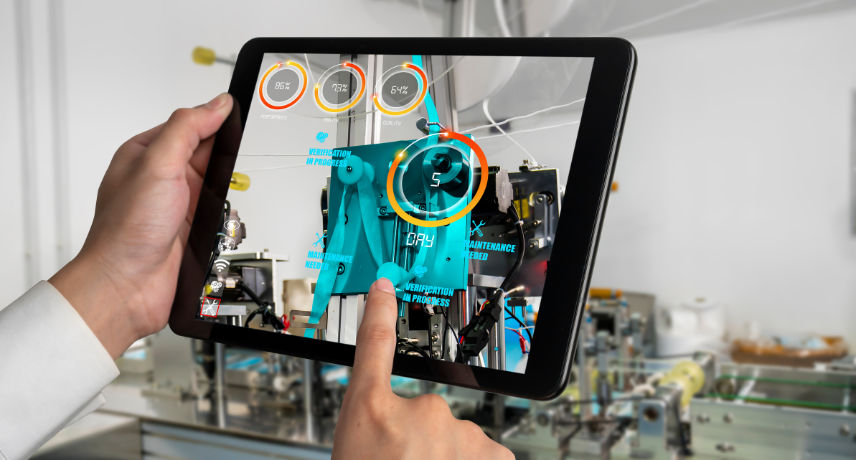
Enquiry Form
Cloud-Based ERP: The Future of Discrete Manufacturing in 2025
The world of discrete manufacturing is evolving at breakneck speed. As we step deeper into 2025, manufacturers are finding themselves at a critical crossroads—either modernize and embrace digital agility or risk falling behind in an increasingly competitive and connected ecosystem. At the center of this transformation lies one defining force: cloud ERP.
No longer viewed as an optional upgrade, cloud ERP adoption has become essential to achieving supply chain transparency, production agility, and operational resilience. For manufacturers producing distinct, countable products—like automobiles, machinery, or electronics—this shift to manufacturing cloud ERP is more than a trend. It’s the future.
Why 2025 Is the Turning Point for Cloud ERP in Discrete Manufacturing
Traditionally, discrete manufacturers relied on on-premise ERP systems—rigid, siloed, and often outdated. But the complex demands of the modern manufacturing landscape have exposed their limitations. Today’s manufacturers need:
- Real-time supply chain visibility
- Faster decision-making
- Integrated operations
- Scalability without overhead
The solution? Cloud ERP systems that offer centralized, flexible, and intelligent control over every facet of production, procurement, inventory, and delivery.
How Cloud ERP is Reshaping Discrete Manufacturing
1. Real-Time Operational Insights
Cloud ERP empowers manufacturers with real-time data dashboards, enabling quicker response to disruptions and demand shifts. Whether it’s monitoring raw material availability or tracking assembly-line performance, cloud ERP gives manufacturers the visibility they’ve always needed—but never had.
2. Scalability and Global Integration
With cloud-based platforms, manufacturers can easily scale operations across geographies, vendors, and production units. Expansion into new markets no longer requires costly IT infrastructure or localized ERP installations—cloud ERP offers seamless scalability at a fraction of the cost.
3. AI-Driven Forecasting and Automation
Leading cloud ERP systems now integrate AI and machine learning, allowing for intelligent production planning, demand forecasting, and predictive maintenance. This reduces downtime, minimizes waste, and ensures leaner operations.
4. Enhanced Supply Chain Agility
Manufacturers can now collaborate with suppliers, vendors, and logistics providers in real time. Cloud ERP discrete manufacturing platforms act as centralized hubs, enabling synchronized planning and execution across the supply chain.
5. Cost-Effective Deployment and Maintenance
Cloud ERP eliminates the need for heavy infrastructure, ongoing maintenance, or dedicated IT teams. With subscription-based models, manufacturers can shift from CAPEX to OPEX, improving financial flexibility.
Key Drivers of Cloud ERP Adoption in 2025
The shift to cloud ERP is driven by several powerful trends:
- Post-pandemic digitization accelerating cloud investments
- Smart factory initiatives and Industry 4.0 integration
- Growing need for real-time collaboration across departments and geographies
- Workforce transformation, with digital-native professionals demanding modern tools
- Cybersecurity and compliance pressures, better handled by cloud providers with dedicated teams
Use Case: Cloud ERP in Action
A mid-sized electronic appliance manufacturer in southern India recently transitioned to a cloud ERP system to manage increasing production complexity and customer customizations.
Results within 6 months:
- 25% improvement in inventory accuracy
- 40% reduction in manual data entry
- Real-time visibility into supplier performance
- Faster quote-to-cash cycle due to automated workflows
This example mirrors a broader trend—ERP transition is no longer just about efficiency, it's about enabling intelligent decision-making.
Overcoming Cloud ERP Transition Challenges
While the benefits are clear, the ERP transition still raises concerns for many manufacturers:
- Data migration complexities
- Training and change management
- Fear of operational disruption
Fortunately, modern cloud ERP vendors offer guided implementation, legacy data integration tools, and intuitive interfaces that ease the transition. With proper planning, downtime can be minimized and ROI accelerated.
Cloud ERP: The Competitive Edge for 2025 and Beyond
As global markets become more unpredictable and customer expectations continue to rise, discrete manufacturers must evolve. Cloud ERP is no longer an emerging technology—it’s the foundation for resilient, data-driven, and agile manufacturing operations.
Key Benefits Recap:
- 🔹 Real-time visibility into operations and inventory
- 🔹 AI-enabled planning and forecasting
- 🔹 Scalable infrastructure for growth
- 🔹 Lower IT costs and faster deployments
- 🔹 Stronger supply chain synchronization
Conclusion: A Cloud-First Future for Discrete Manufacturing
The year 2025 marks a decisive shift in the ERP landscape. As cloud ERP adoption becomes the new normal, discrete manufacturers that transition now will be better positioned to thrive in a fast-moving, digitally connected world.
For those still hesitating—the time to act is now. Cloud ERP is not just shaping the future of discrete manufacturing. It is the future.